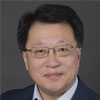Imagine you’re at the symphony and each group of musicians comes out on stage to set up.
You hear the strings get in position to play and tune their instruments. Then come the woodwinds, followed by the percussion and brass instruments. They’re each incredibly talented. But when they play together, it will be truly amazing.
There’s just one problem.
The person who can get them to play in perfect harmony has yet to arrive. That’s the conductor, and until he or she steps on stage, all that’s there is a collection of disparate musicians.
Modern networks are very similar. They’re a technological symphony of sorts. There are many different components, each remarkable in their own way. But until someone can bring them all together, the potential is lost.
Throughout the development of ECOMP, John Donovan was the conductor of the AT&T Technology & Operations (ATO) organization. He united all the moving pieces within ATO under one strategic vision. ECOMP stands for Enhanced Control, Orchestration, Management & Policy. Part of that “technological symphony” is ECOMP, which I help oversee today. As the platform continues to grow, Melissa Arnoldi will take the baton and lead its future development.
ECOMP has 8 components. Think of them as a symphony’s string section. Bassists, cellists, violists and violinists all have separate sheets of music to follow.
From orchestration of virtual machines or policy creation, each part works together to create one melodic sound. They come together to build one giant platform. And they play an important role in the broader mission for network virtualization.
Around the World in 8.5 Million Lines of Code
When we started this technological project, virtualization, SDN, NFV and open source were all in their infancy. So we ran into a multitude of technical challenges. But on top of that, we had to navigate a global effort, which adds geographical and cultural diversity into the mix.
Our teams spanned across the U.S., Belgium, Italy and Israel. And our decision to co-create with a vendor, Amdocs, added in another layer of complexity. They had teams working in Quebec, India and Israel.
Despite our distance from each other, we had to operate as a single unit. It made our task more difficult because our facetime was limited. In fact, 3 of my team members drove an hour to meet me in Rome while I was on vacation, just to put a face to the names. It’s hard to operate in unison when you have to rely on technology to stay connected.
While geographic diversity had its challenges, it also gave us a competitive edge. We were able to maintain a round-the-clock work cycle. For example, if the team here in Dallas finished fixing a bug at the end of day, we would hand it over to the IST (Integrated Testing Team) team in India to continue testing.
Then, the Dallas team would continue development work the next morning with fresh testing results available. Our operation never sleeps. And on top of that, we have people with varying levels of experiences and cultural backgrounds collaborating to come up with the best solution. We could match expertise, interest and drive with different components of the project.
It’s one big performance, orchestrated by a talented global team that combines individual skills to create something truly unique and harmonious: ECOMP.
To learn more about the team dynamics behind ECOMP, check out this video.

David Lu - Vice President, AT&T Labs Domain 2.0 Platform and Systems Development

